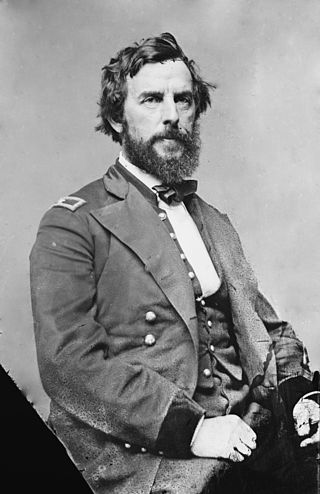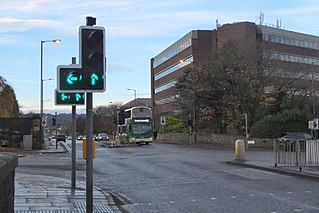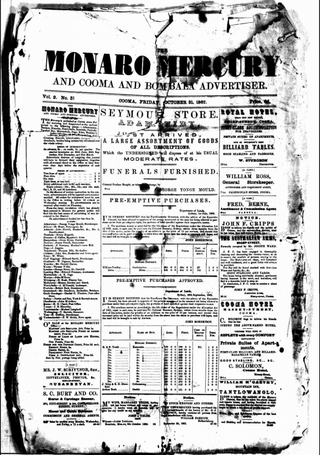
A fife and drum corps is a musical ensemble consisting of fifes and drums. In the United States of America, fife and drum corps specializing in colonial period impressions using fifes, rope tension snare drums, and (sometimes) rope tension bass drums are known as Ancient Fife and Drum Corps. Many of these ensembles originated from a type of military field music.

Horatio Gouverneur Wright was an engineer and general in the Union Army during the American Civil War. He took command of the VI Corps in May 1864 following the death of General John Sedgwick. In this capacity, he was responsible for building the fortifications around Washington DC, and in the Overland Campaign he commanded the first troops to break through the Confederate defenses at Petersburg. After the war, he was involved in a number of engineering projects, including the Brooklyn Bridge and the completion of the Washington Monument, and served as Chief of Engineers for the U.S. Army Corps of Engineers.

Rufus King was an American newspaper editor, public servant, diplomat, and soldier. He served as a Union Army brigadier general in the American Civil War, and was responsible for assembling the famed Iron Brigade of the Army of the Potomac. He was later U.S. minister (ambassador) to the Papal States from 1864 to 1867 and was instrumental in the capture of accused Lincoln assassination plotter John Surratt. Earlier in life, he had been a member of the first board of regents of the University of Wisconsin.

St George's Road is a one-way road in Southwark, London running between Westminster Bridge Road to the northwest and Elephant and Castle to the southeast. The direction of the vehicular traffic is from Elephant and Castle to Westminster Bridge Road. Its name derives from its crossing of St George's Fields, being an open rural area of the parish of St George the Martyr, Southwark. The road was laid out as part of the communications improvements for Westminster Bridge, from the 1740s, connecting the Bridge to the Elephant and Castle junctions with New Kent Road, Walworth Road and Kennington Park Road.

Johnston Press plc was a multimedia company founded in Falkirk, Scotland, in 1767. Its flagship titles included UK-national newspaper the i, The Scotsman, the Yorkshire Post, the Falkirk Herald, and Belfast's The News Letter. The company was operating around 200 newspapers and associated websites around the United Kingdom and the Isle of Man when it went into administration and was the purchased by JPIMedia in 2018. The Falkirk Herald was the company's first acquisition in 1846. Johnston Press's assets were transferred to JPIMedia in 2018, who continued to publish its titles.
Lambeth was a constituency 1832—1885 loosely equivalent in area to the later administrative units: the London Borough of Lambeth and the south-west and centre of the London Borough of Southwark. It returned two members of parliament (MPs) to the House of Commons of the UK Parliament by the bloc vote version of the first-past-the-post system.
The Register, originally the South Australian Gazette and Colonial Register, and later South Australian Register, was South Australia's first newspaper. It was first published in London in June 1836, moved to Adelaide in 1837, and folded into The Advertiser almost a century later in February 1931.

Joseph Jones Reynolds was an American engineer, educator, and military officer who fought in the American Civil War and the postbellum Indian Wars.
The Surrey Yeomanry was a unit of the British Army first formed as volunteer cavalry in 1794. It was reformed in 1901 and saw varied service in the First World War. During the interwar period, it converted to artillery and during the Second World War one of its regiments distinguished itself during the retreat to Dunkirk, saw action during the Second Battle of El Alamein, and also saw service in Sicily and Italy. Its other regiment served in East Africa, the Siege of Tobruk, and in Iraq and Persia. The regiment's lineage is maintained today by 2 Field Troop, 579 Field Squadron (EOD), part of 101 (London) Engineer Regiment (Volunteers).
The Adelaide Football Club, often referred to as the Old Adelaide Football Club, was an Australian rules football club based in Adelaide. Founded on 26 April 1860, it was the first football club formed in South Australia.

Alexander W. Monroe was a prominent American lawyer, politician, and military officer in the U.S. states of Virginia and West Virginia. Monroe served as a member of the Virginia House of Delegates and West Virginia House of Delegates representing Hampshire County. He was the Speaker of the West Virginia House of Delegates during the 1875–1877 legislative session. Monroe also represented Hampshire County in the West Virginia Constitutional Convention of 1872.
The Goulburn Chronicle and Southern Advertiser was a weekly English language newspaper published in Goulburn, New South Wales from 1855–1864.

The Manaro Mercury, and Cooma and Bombala Advertiser was a newspaper published in Cooma, New South Wales, Australia from 1861 to 24 December 1931.
The Second Reynolds Ministry was the 6th Ministry of the Government of South Australia, led by Thomas Reynolds. It commenced on 20 May 1861, when Reynolds succeeded in reconstituting his ministry and retaining power after the defeat of the First Reynolds Ministry. The ministry resigned in October 1861 when Reynolds was unable to reconstruct a ministry following the resignation of John Morphett as Chief Secretary. It was succeeded by the First Waterhouse Ministry, which was specifically constructed as a short-term ministry to deal with the matter of dissident Judge Benjamin Boothby, on 8 October.
The Telegraph was a newspaper in Adelaide, South Australia, founded in 1862, and merged with The Express to become The Express and Telegraph, published from 1867 to 1922.
The 24th Battalion, London Regiment was an auxiliary unit of the British Army. Formed in 1908 from Volunteer units in the Surrey suburbs of London that dated back to 1860, it was part of the London Regiment in the Territorial Force (TF). Its battalions served on the Western Front at Salonika and in Palestine during World War I. When the London Regiment was abolished the unit reverted to the Queen's Royal Regiment and served in the Battle of France, in North Africa, including the Battle of Alamein, and in taly and North West Europe as part of the 7th Armoured Division. Postwar it was converted to an anti-aircraft regiment of the Royal Artillery.

The 23rd Battalion, London Regiment was an auxiliary unit of the British Army. Formed in 1908 from Volunteer units in the Surrey suburbs of London that dated back to 1859, it was part of the London Regiment in the Territorial Force (TF). Its battalions served on the Western Front, at Salonika and in Palestine during World War I. When the London Regiment was abolished the unit reverted to the East Surrey Regiment but just before World War II it was converted to armour as two battalion of the Royal Tank Regiment. In this role it fought in North Africa, including the Battle of Alamein, and in Italy and North West Europe. Postwar it reverted to infantry in 1956 and later was amalgamated with other Surrey battalions into the Queen's Regiment. Its successors continue in today's London Guards.









